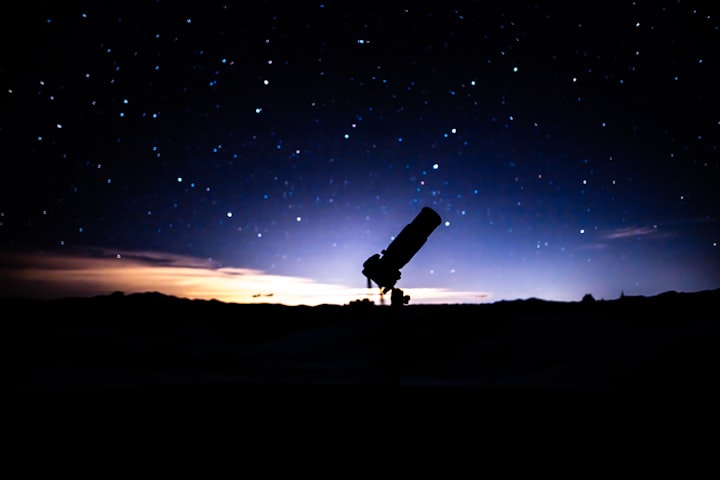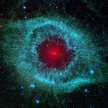You Are Looking Back in Time
Gazing up at the celestial objects in the night sky is like looking back in time.

British spelling.
Just a few hundred years ago, people believed that everything out there in space that could be seen with the naked eye revolved around the Earth.
Following the invention of the first telescopes in the early 1600s, people gained a far better understanding of how the visible objects in the sky behaved and realised that the Earth was not the centre of the universe but just a very small, insignificant part of it.

Photo by Uriel Soberanes on Unsplash.
But, having said that, if it were ever established that our planet was the only one in the entire universe to support intelligent life, then surely our world would be a very special and important place indeed.
Estimates are a bit wild, but there could be 200 billion stars in our galaxy, the Milky Way. A person looking up at the night sky might see 2,500 stars with their unaided vision.
That makes you realise just how small our local area is in comparison to our galaxy.
In the early twentieth century, it was believed that our galaxy was the entire universe, but that was about to change when, in 1924, Edwin Hubble started his detective work using the reflecting telescope at the Mount Wilson Observatory in Los Angeles, USA.

Photo by Christian Nielsen on Unsplash
Over the years, it became clear from his observations that other galaxies existed far beyond the Milky Way.
By studying their light, he noticed that the spectral lines were red-shifted, meaning that most of the galaxies were speeding away from us and each other.
This meant that the galaxies must have been closer together in the past, and in the very distant past, all the mass in the universe must have been in the same place.
This was more evidence for the Big Bang or the creation of the universe, starting from one very small spot.
For a human being, one minute seems like a very short time, but when the universe was just one minute old, many important changes had taken place. That was the start of its long evolutionary path.
It is just as well that gravity was also created; without it, there would be no structure in the universe, and we would not exist.
To find out more information about stars and other objects in space, astronomers study their light. They can measure the properties of light, such as its intensity, wavelength, brightness, and polarisation.
The speed of light can be very important in determining the distance of faraway objects. In one hour, light will travel an astonishing 1,080 million kilometres.
There are exciting times ahead in the hunt for more information on the Cosmos. After more than 20 years of construction, the James Webb space telescope has been completed and has passed its rigorous testing. It will be the successor to the very successful Hubble Space Telescope, which has given us so much new information about what is out there in that vast area we call the universe.
The James Webb telescope has been constructed using 18 large hexagonal mirrors, which combined are 6.5 metres in diameter. The telescope is designed to collect infrared light. This new telescope will be much more powerful than the Hubble telescope, which has seven times the light-collecting area.
The launch was originally scheduled for October 2018 but was rescheduled for lift-off sometime in late 2021.
The James Webb space telescope was safely launched into space in December 2021; everything went well, and it continues its very important scientific work.
The estimated cost of the James Webb telescope is over 10 billion dollars. It is hoped that the mission will be able to carry out scientific work for up to 10 years, or until its fuel supply runs out.
Will it see objects that are much farther away than what the Hubble telescope is capable of seeing?
The answer to that question is yes.
Is the James Webb telescope going to be a success? That must be a concern for the thousands of people who have worked on the project, some for over 20 years.
After the Hubble telescope was launched into space and arrived at its destination, it was found to have a problem with its primary mirror. Fortunately, the Hubble telescope is just 550 kilometres from the surface of the Earth, close enough for astronauts to travel there and carry out repairs.
Over the years, astronauts have visited the Hubble telescope five times to carry out repairs. Sadly, there are no plans to ever go back.
The James Webb telescope is different; it will orbit the Earth at a distance of 1.5 million kilometres. As of now, that distance is too far for astronauts to travel there and fix any problems that may arise.
There are also a few huge ground-based telescopes under construction. The large Vera C. Rubin Observatory in northern Chile is due to be in operation as early as 2023.
The commissioning of the Giant Magellan Telescope might start as early as 2029. It, too, is in Chile. It is expected to have a resolving power 10 times greater than the Hubble telescope.
As early as 2027, the Extremely Large Telescope, or ELT, should be taking its first look at extremely distant objects. It will have 256 times the light gathering area, and it will take images that are 16 times sharper than Hubble images.
It should vastly advance astrophysical knowledge. Two of its aims will be to study planets orbiting other stars and maybe find the first galaxies that formed in the universe.
Why are so many telescopes situated in Chile? It is home to the Andes Mountains and the Atacama Desert, areas that have some of the stillest and driest air in the world.

Photo by Guillermo Ferla on Unsplash
When we look at distant objects, we are looking back in time. Light leaving the sun takes just over 8 minutes to arrive on the earth, so we are seeing the sun as it was 8 minutes ago.
When we look at the spiral galaxy Andromeda, we see it as it was 2.5 million years ago; that is how long its light has taken to reach the Earth.
With highly advanced telescopes, we can now see objects that are over 13 billion light-years away.
Just think about the objects that are 13 billion light-years away. The light from those distant objects has been travelling towards us at almost 300,000 kilometres per second for all of that vast time. Yes, it is incomprehensible.
The end.
<><><>
You may find my easy-to-understand stories about the universe and life interesting and educational.
If you subscribe to me for free, you will see my latest stories. Regards.
About the Creator
A B Forbes
Someone with a lifelong passion for that gargantuan area we call the universe. I also write stories about life itself. Enjoy






Comments (1)
well written.